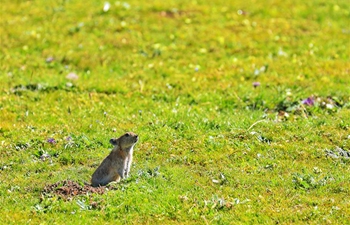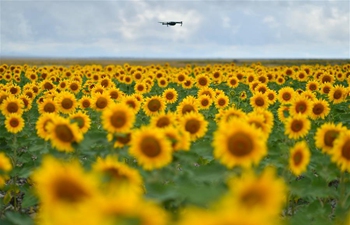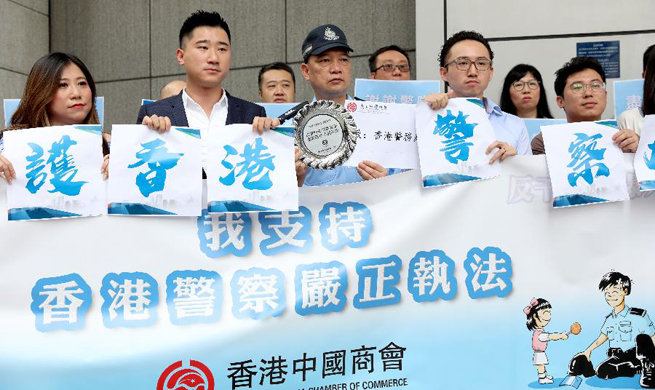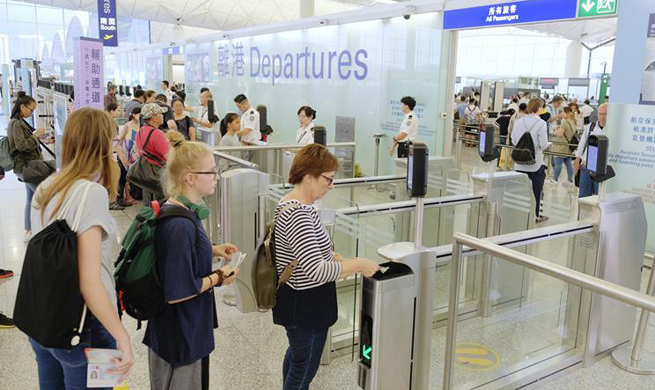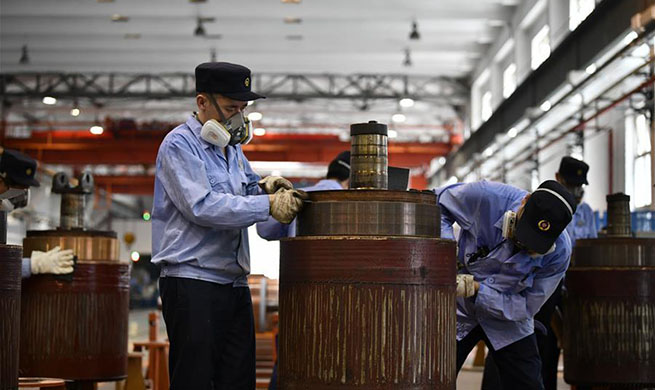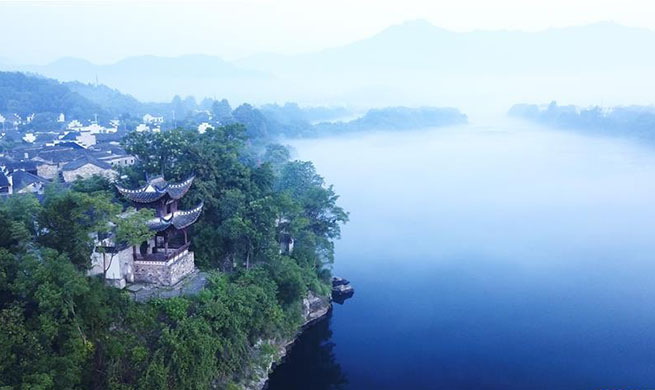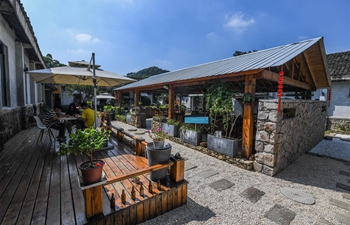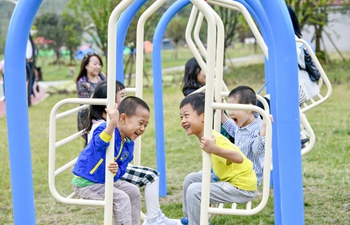XI'AN, Aug. 15 (Xinhua) -- Chinese anti-Japanese war memorials nationwide hosted commemorative activities on Thursday to observe the 74th anniversary of Japan's surrender in World War II.
Seventy-four years ago, on Aug. 15, Chinese people ended 14 years of fights against the Japanese invaders, as Japan announced its unconditional surrender.
The anniversary marks an important commemorative day of the transition from war to peace, as Chinese memorial halls of the War of Resistance against Japanese Aggression keep the memory of the fallen fresh in our minds.
On the outskirts of Hohhot, capital of north China's Inner Mongolia Autonomous Region, a red asphalt road threads ruins of the war and memorial halls scattered in the mountains to form a tour loop.
"Visitors to the preserved sites are able to see the living and combat environment during the war," said Wu Mingguang, director of the Cultural Relics Protection and Management Institute of Wuchuan County.
He said the Daqing Mountain anti-Japanese war base was one of 19 anti-Japanese bases in China, where many wartime relics and martyrs' cemeteries are preserved in the mountains.
"This is the cavalry dormitory, next to the stable. This was the living environment of the Daqing Mountain detachment of Chinese cavalry during the anti-Japanese war," said Yin Lu, a volunteer commentator, guiding a group of 30 primary school students visiting the site on Thursday.
Yin said she volunteered to work here in the summer vacation partly because her grandfather was a member of the cavalry detachment more than 70 years ago. She grew up listening to her grandfather's stories. She signed up early this year when she learned that the memorial was recruiting volunteers.
She said many visitors were brought to tears when hearing stories of Chinese soldiers' fight against Japanese invaders under the harsh living conditions and lacking food and supplies.
In the 9.18 Historical Museum in Shenyang, capital of northeast China's Liaoning Province, children travel back in time to the era of their heroic forebears. Coloring in cartoon depictions of Chinese anti-Japanese heroes such as Zhao Yiman and Yang Jingyu, the characters are then brought back to life through 3D imaging technology, telling their heroic deeds.
The Children's Experience Hall in the museum is the first of kind in China with the theme of the War of Resistance Against Japanese Aggression. Since its inauguration in 2016, it has received tens of thousands of children.
On Sept. 18, 1931, Japanese troops invaded the northeast region of China, and then in July 1937, launched a full-scale invasion.
The museum was built to keep the memory of this historic event alive. Sirens sound on Sept. 18 every year in the city to observe the anniversary of the Japanese invasion.
"The anti-Japanese War memorials and revolutionary sites pool the resources for the younger generations of Chinese to remember their heroic ancestors and the history of the War of Resistance Against Japanese Aggression, as well as learn the spirit of unremitting struggle for national rejuvenation," said Bo Shaohai, secretary-general of the West Yunnan Anti-Japanese War Culture Research Association in Tengchong City, southwest China's Yunnan Province.




